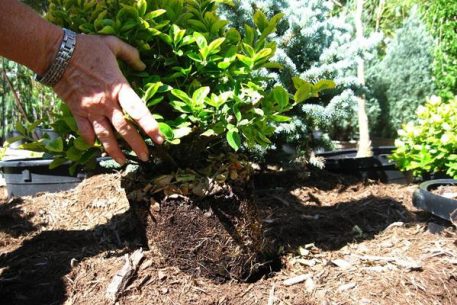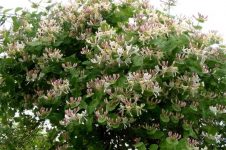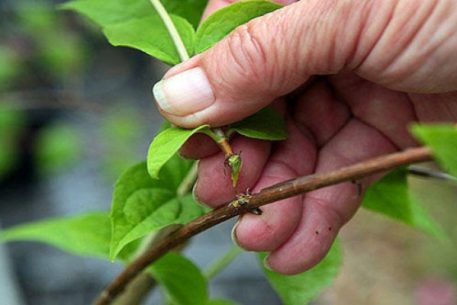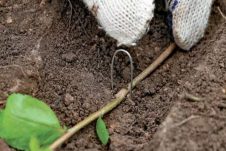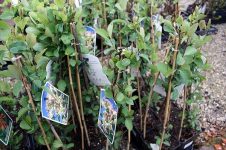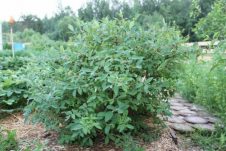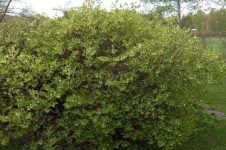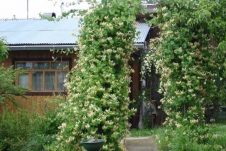A typical variety of the genus Honeysuckle is the honeysuckle honeysuckle, which has gained immense popularity in the vertical gardening of personal plots. Curly liana, sung in many legends as a symbol of passion, devotion and highly decorative, will be a wonderful addition to the landscape composition of the garden or a cozy courtyard.
Material Content:
Plant description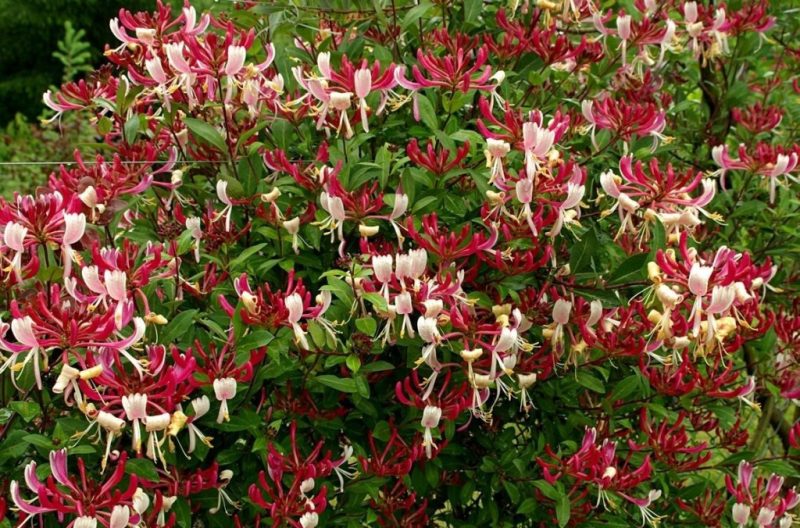
Honeysuckle honeysuckle, also known as fragrant honeysuckle, is a climbing bush with a height of up to 6 m. Light green shoots, covered by oppositely arranged leaf plates, yellow-white flowers forming in the upper sinuses of which change their color to brown. In place of fragrant flowers during the fruiting period, which falls in the second half of summer, red berries form on short stalks, which creates the appearance that the fruits are glued to the leaves.
Fragrant liana is represented by two decorative forms:
• alba - plants with white flowers that bloom for half a month earlier than the type species;
• low-flowered - plants with pink-red flowers, the number of which is much less than that of the main species or the above form.
Honeysuckle honeysuckle (Lonicera caprifolium) planting in open ground
In order for the ornamental shrub to maintain its qualities, planting should be carried out in compliance with the basic rules.
Soil requirement, site selection
Honeysuckle honeysuckle feels good in sunny areas or with slight shading, the soil prefers drained and fertile. The soil is being prepared a few weeks before the seedlings are planted: organic and complex mineral fertilizers in the form of compost, humus, and azofoska are made under digging.
How and when to plant a bush
The optimal time for planting shrubs in open ground is the second half of spring after passing the threat of return frosts. When the site is prepared:
1. Digging pits with dimensions of 50x50 cm are excavated, on the bottom of which a drainage layer of broken brick is placed, covered with fertile soil by ⅔ volume.
2. If a hedge is planned, then the distance between future seedlings is maintained at 1 m, and for group plantings - 1.5 m.
3. Saplings with straightened roots are set on the ground and buried in such a way that the root neck rises 5 cm above the ground.
4. In the absence of a wall or fence nearby, a support in the form of metal or wooden battens is immediately dug.
5. The near-stem circle is watered, after which the root neck is flush with the ground level.
Read also:edible honeysuckle - planting and care, reproduction
Propagation of fragrant creeper
Decorative culture can be propagated by seeds, cuttings and layering.
Seed way
A laborious and lengthy process in which stratified seeds are distributed in early spring on the surface of a moistened substrate prepared from peat and sand in equal parts. The containers are placed under glass and are contained in a warm, bright room. When the seedlings appear, the protective glass is removed, and after the formation of 3 real leaves they dive. In the open ground, planting material is planted only at the end of next spring. Flowering of specimens obtained by the seed method is noted after 3-4 years.
Cuttings
In the spring procedure:
1. From the middle part of the shoots cuttings are cut 15 cm long with 2 internodes.
2. Cuttings are buried in a light, nutrient substrate on one internode.
3. Plastic bottles are installed above the plantings to create a greenhouse effect, which are systematically cleaned for ventilation and moisturizing.
4. After the formation of new leaves, the rooting process is considered to be successfully completed.
5. At a constant place, new specimens are planted at a permanent place of cultivation.
Propagation by layering
The most productive way, which is carried out in the spring. The lower shoot of the vine falls into a trench prepared in advance, where it is attached and rooted. The top of the branch is left above the ground. During the summer, layering is watered and fed, after which it is separated from the mother's specimen and planted at a constant place of growth.
Honeysuckle Care Honeysuckle
Curly honeysuckle is quite unpretentious, so care will not take much time.
Watering
The key to successful cultivation of a moisture-loving culture is systematic watering, in which the trunk circle must always remain moist.
Humidification is carried out at the rate of 15-20 liters of water under the bush with an adjustment of purity depending on the drying rate of the soil.
Loosening, weeding and mulching
After wetting, the soil loosens and is cleared of weeds. To prevent evaporation of moisture and reduce the frequency of weeding, loosening, the trunk circle is covered with a layer of mulch.
Top dressing
To maintain soil fertility and ensure abundant flowering, decorative honeysuckle fertilizes twice a season:
• with the help of organics in the spring;
• in the foliar way using mineral complexes in the summer.
Pruning
Decorative liana with fragrant flowers is subject not only to sanitary, but also to formative pruning:
1. Forming haircut - in the first year after planting, the honeysuckle shoots are shortened by ⅔ length.In the next season, 3-4 skeletal branches are left, and the rest are removed. During the growing season, lateral shoots are launched along the support at the request of the gardener.
2. Sanitary pruning - the procedure is carried out after the awakening of the kidneys, in order to identify dried shoots that do not become green, but remain lifeless.
Winter preparations
Species plants in adulthood do not hide. However, varietal, hybrid and young specimens are insulated with a thick layer of dry leaves as mulch. After protection of the basal area, the plants are removed from the support, laid on the litter and covered with natural covering material.
Diseases, pests and methods of dealing with them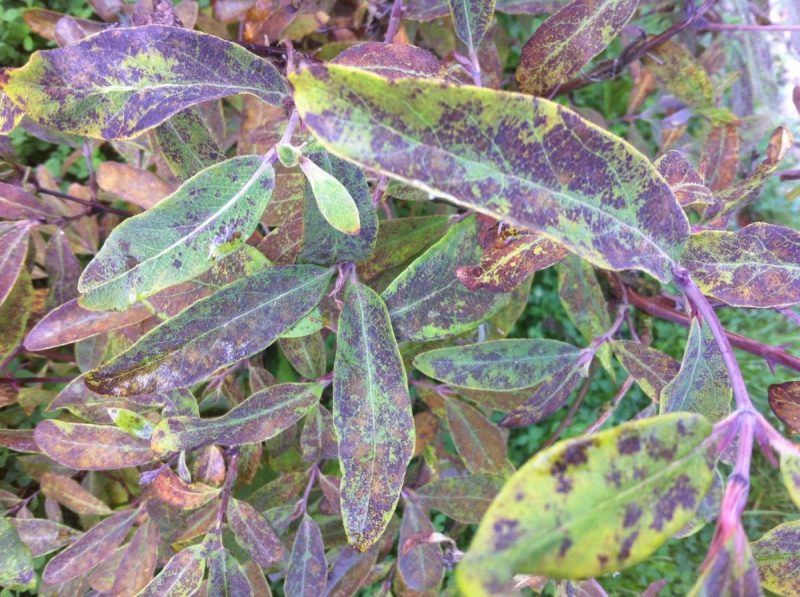
Despite good immunity, honeysuckle honeysuckle can be attacked by aphids and cabbage caterpillars, which should be controlled with insecticidal pesticides according to the instructions on the package. Among the diseases on the shoots of the plant, foci of powdery mildew and rust can be noted. As an effective means to combat diseases, fungicides are used. As a preventive measure, it is recommended to remove diseased shoots and clean the trunk circle from infected plant debris after leaf fall.
Decorative honeysuckle in landscaping
Landscape designers practice the use of honeysuckle honeysuckle in vertical gardening of a personal plot. Using a winding creeper:
• create beautiful hedges;
• ugly corners of the plot are decorated, including the walls of outbuildings;
• arbors are decorated;
• fences dividing the garden areas are drawn up.
Thus, thanks to the decorative creeper, the gardener will be able to green the area with minimal physical and time costs, filling it with bright colors and a wonderful aroma.


